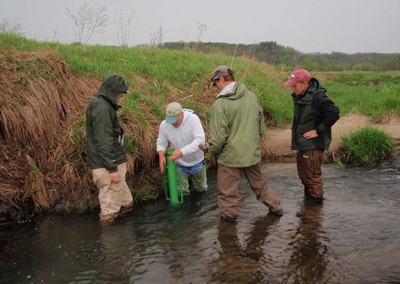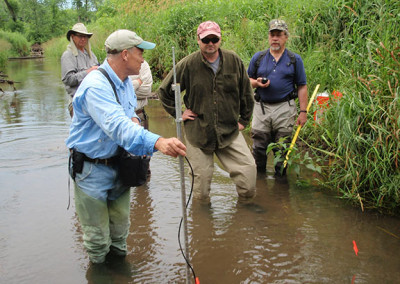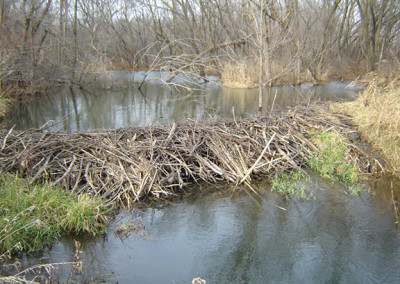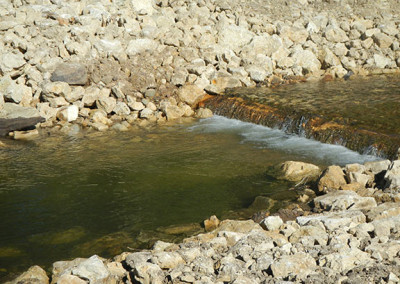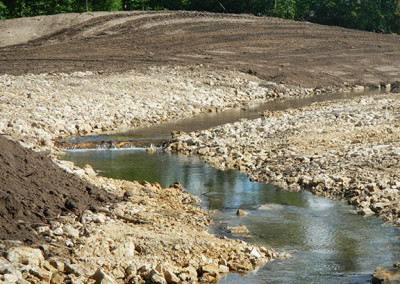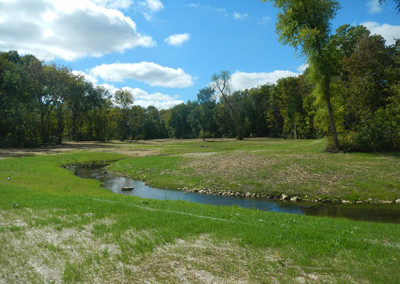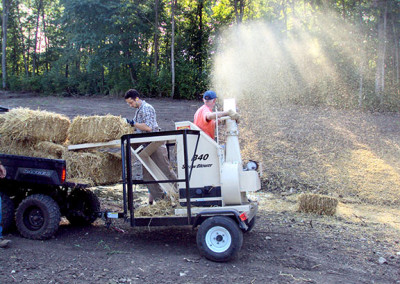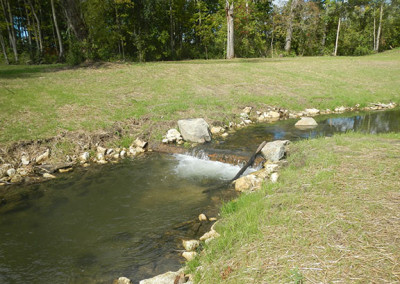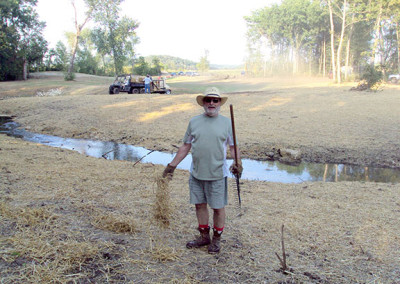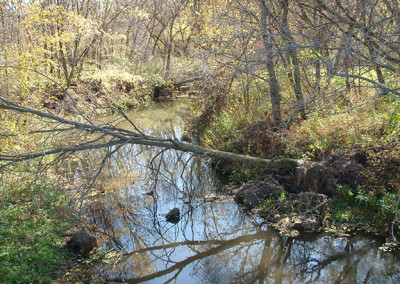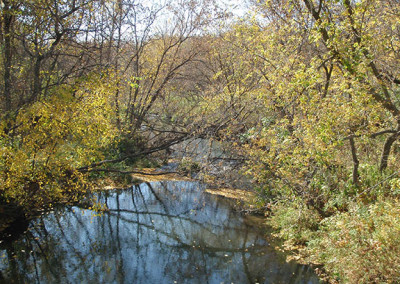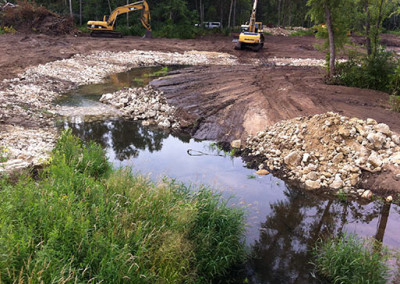Bring Back the Natives
Reintroduction of once native and wild Brook Trout to the Trimbelle.Trimbelle Restoration at Highway W | Bring Back the Natives
The Trimbelle River restoration at Highway W started as a “Bring Back the Natives” project, an initiative to reintroduce the once native Brook Trout to the stream. Over the decades, deforestation and poor agricultural practice had severely eroded the stream habitat in the project area. Bank erosion and sedimentation into the river had led to higher water temperature and slower stream flow. Once teeming with wild native brook trout trout, the river had become seriously impaired by sand and silt that washed down from agricultural fields a century ago.
There are several springs within the project area, doubling the flow volume of the river. Before the project began, the vertical river banks were mostly four feet high and composed entirely of sand and silt. The substrate beneath the bottom contained gravel which is preferred by trout and the insects that they eat. Springs are preferred by brook trout for spawning. According to the WI DNR, with the proper stream rehab, the project area had potential reduce the stream temperature and increase spawning habitat and cover to be suitable brook trout habitat.
The Highway W restoration project started as a one-year project just below the highway bridge, about 5 miles south of River Falls. After completion of Phase 1 of the project, some additional funding and materials remained that was approved for continuation downstream for Phase 2 in 2014. Area landowners were so impressed by the rehab work in Phase 1 and 2, they offered additional easements for the final portion of the stream to Highway 65. Funding and materials were secured for Phase 3 to be completed in 2015. The improvement work was done by a trout stream crew from the Wisconsin DNR, Kiap-TU-Wish chapter of Trout Unlimited, and a small army of volunteers.
PHASE 1
The 2013 Phase 1 project restored nearly a half mile of excellent brook trout habitat was re-created in the upper Trimbelle River. The river banks were sloped back more gently to better connect the river to its flood plain. The edge of the river was armored with rock, making the stream narrower, deeper, and faster. In the stream, root wads, boulder clusters, and individual boulders now provide cover for trout. Some springs that flowed over land were re-routed to enter the river in deep pools where they can be better used by trout for spawning.
The initial estimate was that about 1100 box elder trees would need to be removed. As volunteers with chain saws worked through the winter weekends, eventually more than 3000 trees were cut.
A few lunker structures were built by volunteers and installed in the banks to provide additional cover. The disturbed soil was planted with various grasses. Locally gathered acorns were used to plant a large number of oak trees….far more desirable than box elders.
In conjunction with the project, six volunteers were trained in scientific protocols for stream assessment and monitoring. Temperature loggers were installed to record water temperatures year-round. Native brook trout will be stocked in the river by DNR personnel. The river conditions and the trout and insect populations will be re-assessed each year through 2018.
PHASE 2
The 2014 Phase 2 was a downstream extension of the work done in 2013. It was over 1800 feet long. More than 5,000 tons of rock used at to the site. Volunteers had removed several hundred invasive box elder trees. The limbs and tops were burned while show depth was sufficient to prevent the fires from spreading.
PHASE 3
The 2015 Phase 3 is also a downstream extension of the work done in 2013 and 2014. With additional landowner easements acquired, this final extension will take the entire project downstream to the Highway 65 bridge. Although less box elders and other invasive plant species are in this area, more than 2,000 tons of rock have been delivered to the site.
A big THANK YOU to the following partners for helping fund these projects:
| Fairmount Minerals | Trimbelle Rod & Gun |
| Xcel Energy | Patagonia |
| Wisconsin Trout Unlimited “Friends of WI TU” | Trout Unlimited Embrace-A-Stream Grant |
| Pierce County | Kiap-TU-Wish board and members |
| The Trout and Salmon Foundation | Wisconsin DNR |
| James E. Dutton Foundation | National Fish and Wildlife Foundation |
3,000 invasive box elder trees were removed by Kiap-TU-Wish Volunteers in Phase 1
